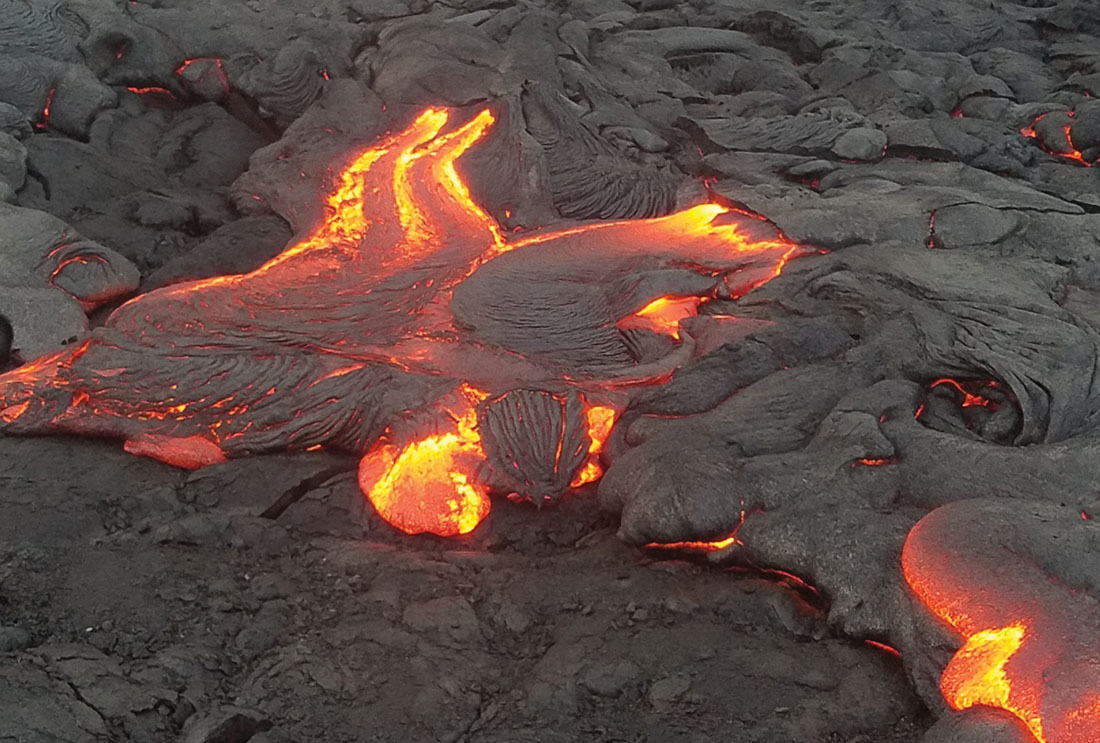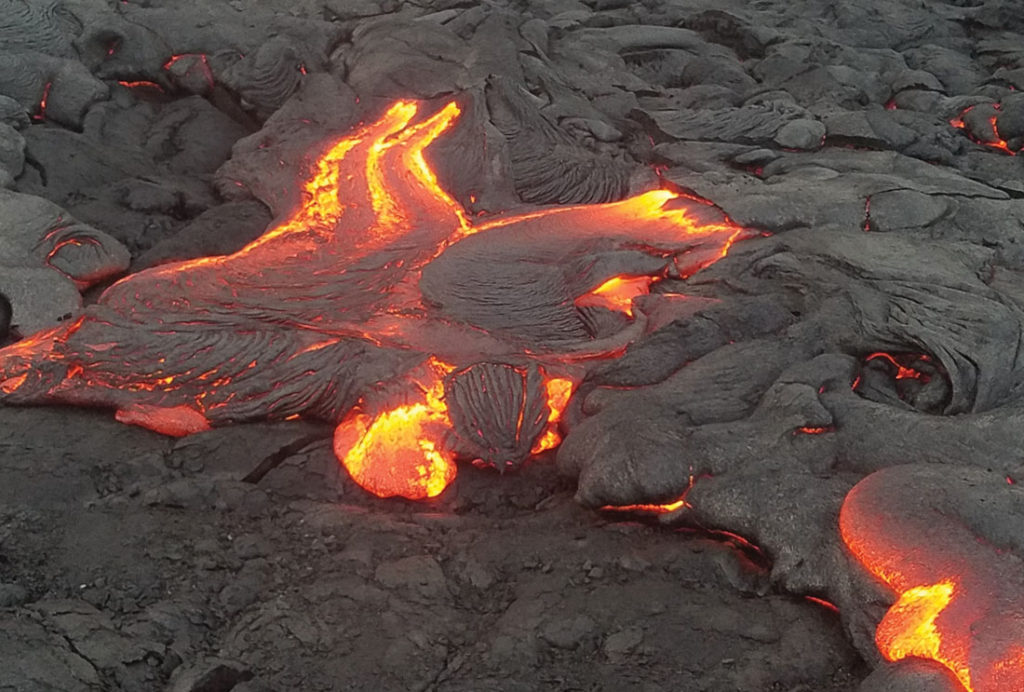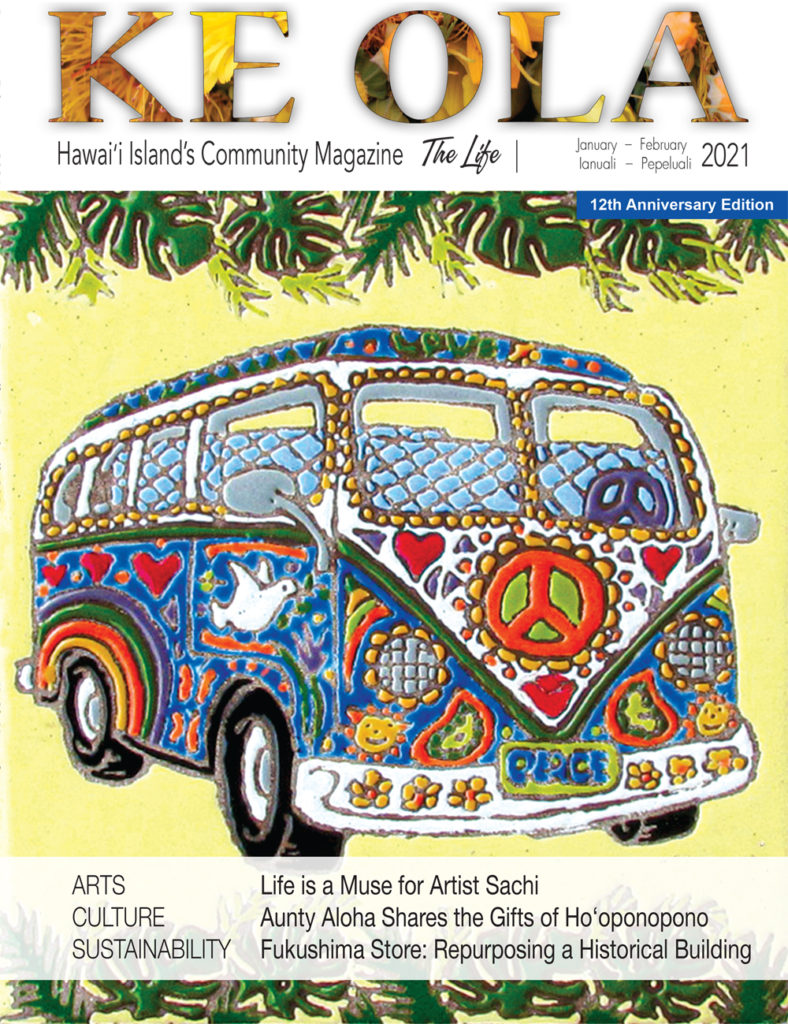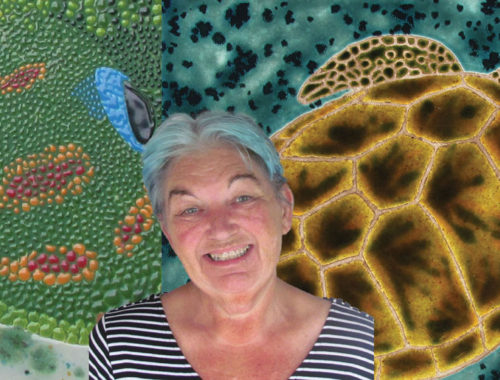
Flavor of the Earth, with Recipe for Molten Lava Chocolate Cake

By Brittany P. Anderson
Hawai‘i Island is well known for its volcanoes. The 2018 eruption saw fountains of lava shooting into the night sky, hurling glowing orange orbs into the heavens like rockets visible from homes and backyards in lower Puna. A pāhoehoe lava stream moved like an LA freeway towards the sea, laying claim to anything and everything in its way. It was excruciatingly mesmerizing and devastatingly beautiful, the hallmark of Peleʻs calling card.
Amongst the ashes, ‘a‘ā, and pāhoehoe, the people of lower Puna are still trying to put their lives back together. Isolated islands of land called kīpuka, while surrounded by lava, are places residents still call home, some backpacking in and out for supplies. In the long run, volcanic deposits evolve into some of the most precious agricultural lands on Earth.
The fertile soil of the Hāmākua Coast, Kona coffee country, and verdant fields of Kohala all have something in common—they’re all located at the base of Hawai‘i Island volcanoes. The foundation of where our food comes from is the soil, and on Hawai‘i Island, lava is that foundation.
Cacao and coffee grown in volcanic soil take on more complex flavors, much like wine, developing notes according to their terroir.
Cooled lava, called basalt, is broken down through wind and rain, creating tiny particles that make soil. Because basalt weathers easily, it releases nutrients to plants as soon as the roots make contact.
Take, for example, coffee grown above the longest and deepest lava tube in the world, Kazumura Cave. Stretching 40.7 miles from Kīlauea Crater to the Pacific Ocean, it weaves below some of Punaʻs most renowned coffee farms. It is said that when drinking water from the roots hanging within the cave, you can taste the same notes as in the coffee growing above.
Cacao, the main ingredient in chocolate, benefits from the nutrient-rich soil produced from lava. Chocolate enthusiasts highly prize chocolate made from cacao grown in volcanic soil due to the bold flavors it creates. Tasting notes of cherry, unique earthiness, and citrus are common characteristics for Hawai‘i Island produced chocolate. But each estate-grown cacao has a flavor journey imparted into the bean.
The journey of magma pushing up to the Earthʻs surface, billowing across the terrain, and freezing in place hundreds of years prior is present in Hawai‘i Island chocolate and coffee. In the Puna District, the terroir bestows an aftertaste of wind whipping across lava fields and rain beating silvery black lava rock.
This recipe for molten lava chocolate cake can be made quickly in the microwave or baked in the oven. Either way, it produces a soufflé-like cake with a gooey center. Using local coffee to make your own espresso powder is easy: simply dry used coffee grounds and then grind into a fine powder with a blender or coffee grinder. Utilizing local coffee and local chocolate in this recipe highlights the taste of Hawai‘i Island.
Molten Lava Chocolate Cake

Ingredients
1/4 cup all-purpose flour
1/4 cup granulated sugar
2 Tbs unsweetened local cocoa powder
1/4 tsp espresso powder (optional)
1/2 tsp baking powder
Pinch of salt
3 Tbs unsalted butter, melted
3 Tbs milk
1 egg
1/4 tsp local vanilla extract
1 oz lightly broken up local chocolate of your choice (anything from local goat milk caramel to espresso bar are great additions)
1 Tbs water
Method
Within a 2-cup sized microwave-safe mug or bowl, whisk the flour, sugar, cocoa powder, baking powder, and salt until well combined. Add melted butter, milk, egg, and vanilla to the mug. Whisk well to combine. Make sure to blend any flour that may be stuck in the bottom. Set your pieces of chocolate in the center of the mug. Do not push chocolate down; it falls as it bakes. Next, gently drizzle the 1 Tbs water on top of the batter. Cook in the microwave on high power for 1 minute and 15 seconds or bake in the oven at 400°F for 10–15 minutes. The cake will rise as it cooks. Your molten lava chocolate cake is done when the center looks shiny and somewhat wet. Resist the urge to eat right away—let it cool for roughly five minutes, so you don’t burn your mouth. Enjoy!



